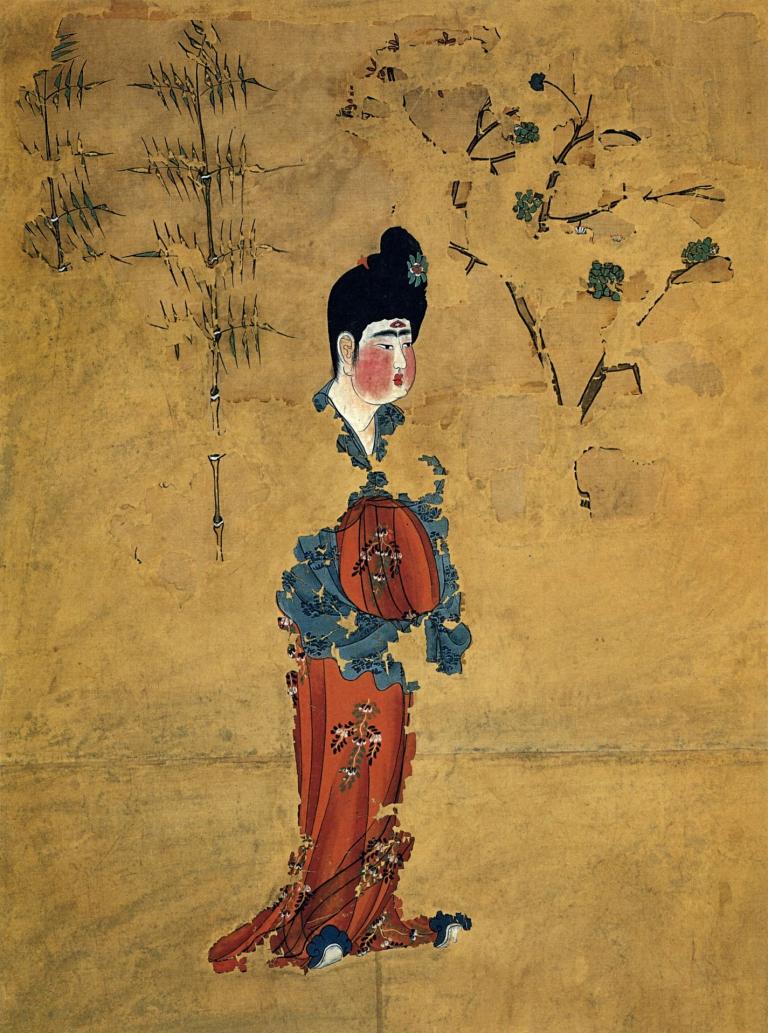Mural Painting in Tombs and Grotto
3 min readMural Painting in Tombs
From the artistic works left till today, we know that the principal part of paintings in Sui and Tang dynasties was murals, including tomb murals and grotto murals. Either officials and court painters with eminent reputation or folk painters unknown to the public could produce mural works. At the time all the massive palaces, official residences, temples and tombs had places for murals. However, because of the passing time, natural disasters and warring destruction, most on-ground architecture murals other than grotto murals cannot be seen today. Only tomb murals kept intact. Along with the development of archaeological unearthing process, more and more tomb murals were found and demonstrated the refulgence of art of murals at that time.
Murals in Sui and Tang tombs inherited the tradition of Han, Wei and the Six Dynasties and paid special attention to the reflection of real life. The subjects were more extended as to deities of the four directions, carriages and ceremonious group, daily life, producing work, court feast, communication with foreign nations, architecture and pavilions, rocks and trees, flowers and birds, sports, astronomy, all included. The scale of some murals was much larger than those of previous times.
Murals in Sui and Tang had simple and fluent sketch lines, pure and bright colors.
And the use of hazing staining method endowed the images with enriched and diversified layers. The arrangement of picture was simple and clear. The proportion of figures was accurate and lifelike. The comely figures in the early stage gradually became plump with chubby cheek and portly figure, which reflect the characteristics of the era. Pavilions and architecture were painted according to the real proportion, the accuracy of which really revealed the artistic achievement of paintings in Sui and Tang dynasties. And the scene of polo playing and courtesy ceremony reflected part of the reality in social life and communication between China and other countries in Tang dynasty. Representative tomb murals include murals in tombs of Li Shou, Li Chongrun, Li Xian and Li Xianhui.

Mural Painting in Grotto
In Sui and Tang dynasties, murals prevailed in temples. Most painters were goodat mural paintings. Wu Daozi alone had left more than 300 murals in temples in Chang’ an and Luoyang cities, which demonstrated the prevalence of murals in temples.
Grottos, as a kind of temple, were in full bloom at the time. There were representational grottos and niches all over the country. The most famous MogaoGrottos in Dunhuang had more than 490 caverns. In the grottos, there were murals with abundant subjects besides statues of Buddha. Relics of cave paintings from Sui and Tang dynasties can be seen in Kezi’ er Grotto and Kumutula Grotto in Xinjiang Uygur Autonomous Region, Mogao Grottos in Dunhuang and Yulin Grotto in Gansu province. The Mogao Grotto is the most overwhelming one.
In Mogao Grottos, murals created in Sui and Tang dynasties were apparently different from murals in the previous period in terms of subject matter and manifestation form. The subject matter became more abundant, mainly about Buddhist sutra stories that depict the happy, wealthy, and auspicious life in the ealm of Buddha, the Pure Land, Buddhist devotees life and traveling. In terms of manifestation form, the use of vigorous strokes, fluent lines full of expressive force and gorgeous colors made the murals refulgent and elegant. The scenes depicted by the murals were magnificent and the whole picture was complete and properly sculpted. The previous image of self-surrendered, self-tortured and self-sacrificed Buddha became kind, affable and amiable. The images of Bodhisattvas gradually changed from masculine to feminine with beautiful and elegant figures and lifelike expression. The flying devata and devmusician, either dancing in the air or devotedto musical performance, were all natural and dainty. And Buddhist devotees appearedin murals were no longer as individual but in great groups and were usually put a the central place of the whole mural, indicating the wealth and ascendency of the rich and noble families and a larger proportion of people of flesh and blood inreligious paintings. The murals in cavern No.220, No.217, No.103, No.130 and No.156 of the Mogao Grottos were representatives of the time.









